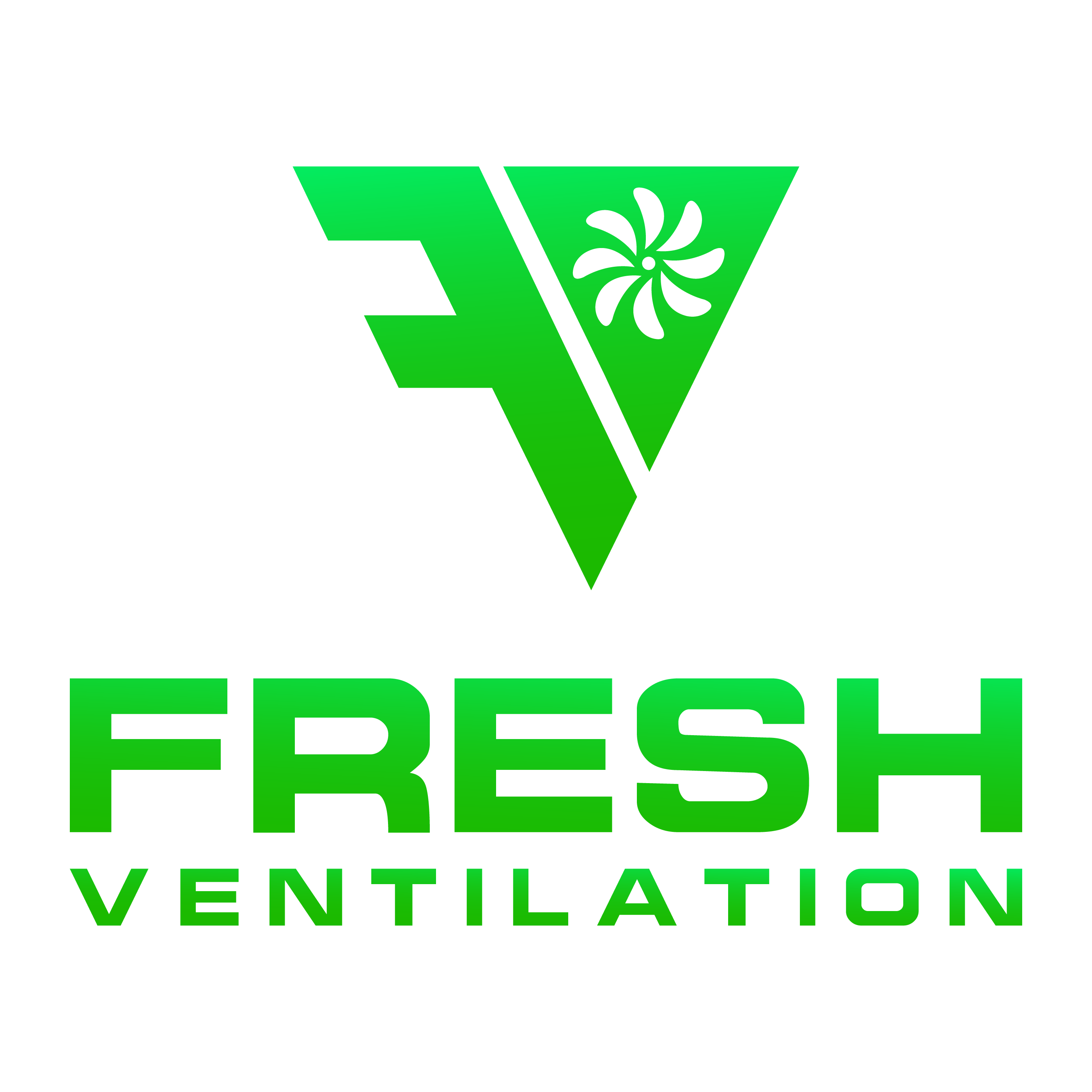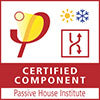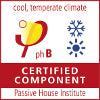STIEBEL ELTRON Heat Recovery Ventilation Systems
Ensuring that your home is provided with fresh air is made easier than ever with an energy-efficient ventilation system by STIEBEL ELTRON. These systems are incredibly healthy – not only do they provide air that is better for us to breathe, but they also help to prevent mould growth in the building itself. Our systems can provide significant cost savings – they can recover up to 94% of the energy normally lost through windows and return it to the heating system. With STIEBEL ELTRON's ventilation systems, you literally stop throwing money out the window.

Heat Recovery Ventilation Systems
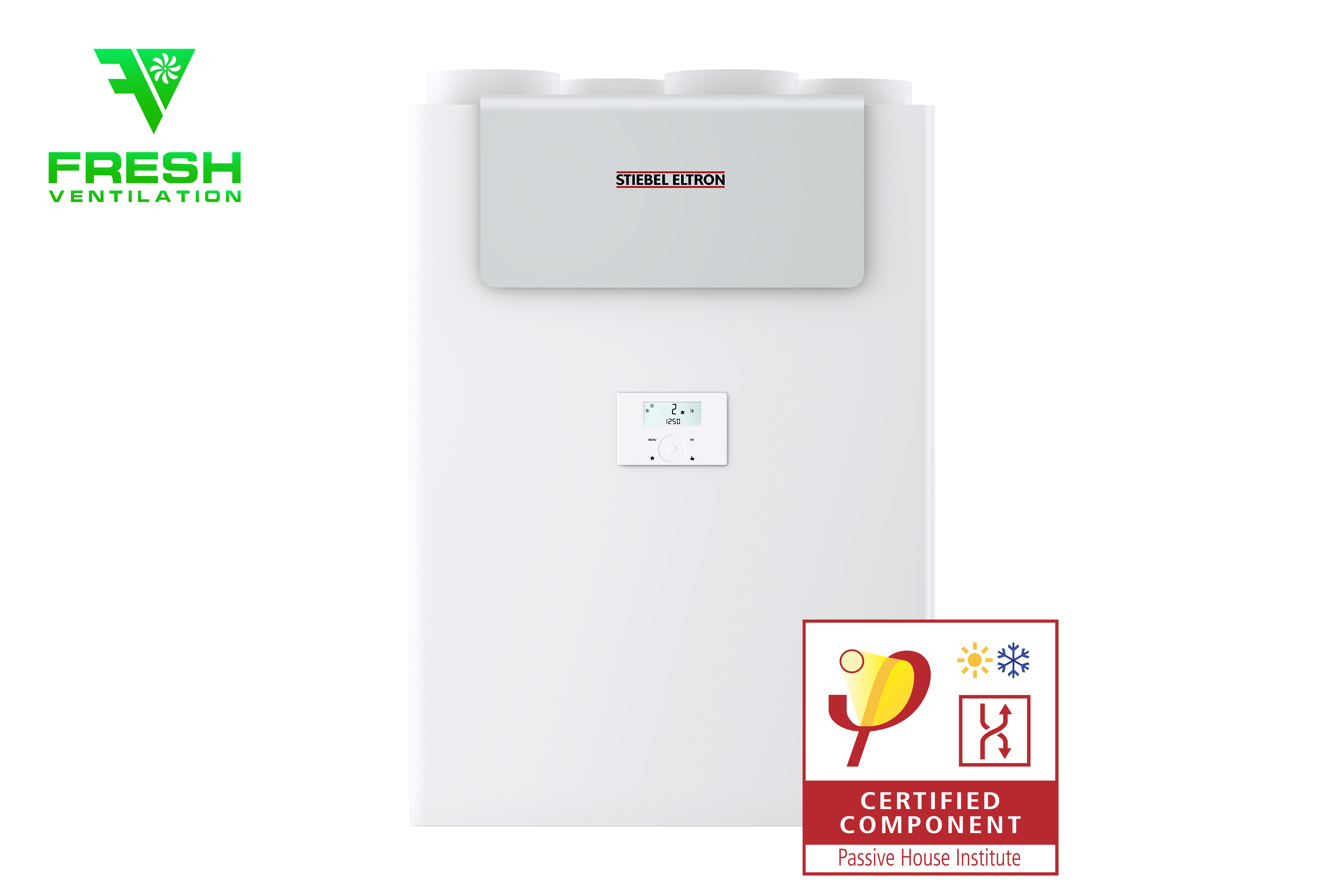
LWZ 180 / LWZ 280
- Made in Germany.
- Centralised ventilation with up to 94% heat recovery.
- Inbuilt display directly on the appliance.
- Significantly reduced noise levels.
- Helps prevent condensation and mould through improved ventilation.
- Air flow rates 60 - 350 m3/h.
- ERV core available for humidity management.
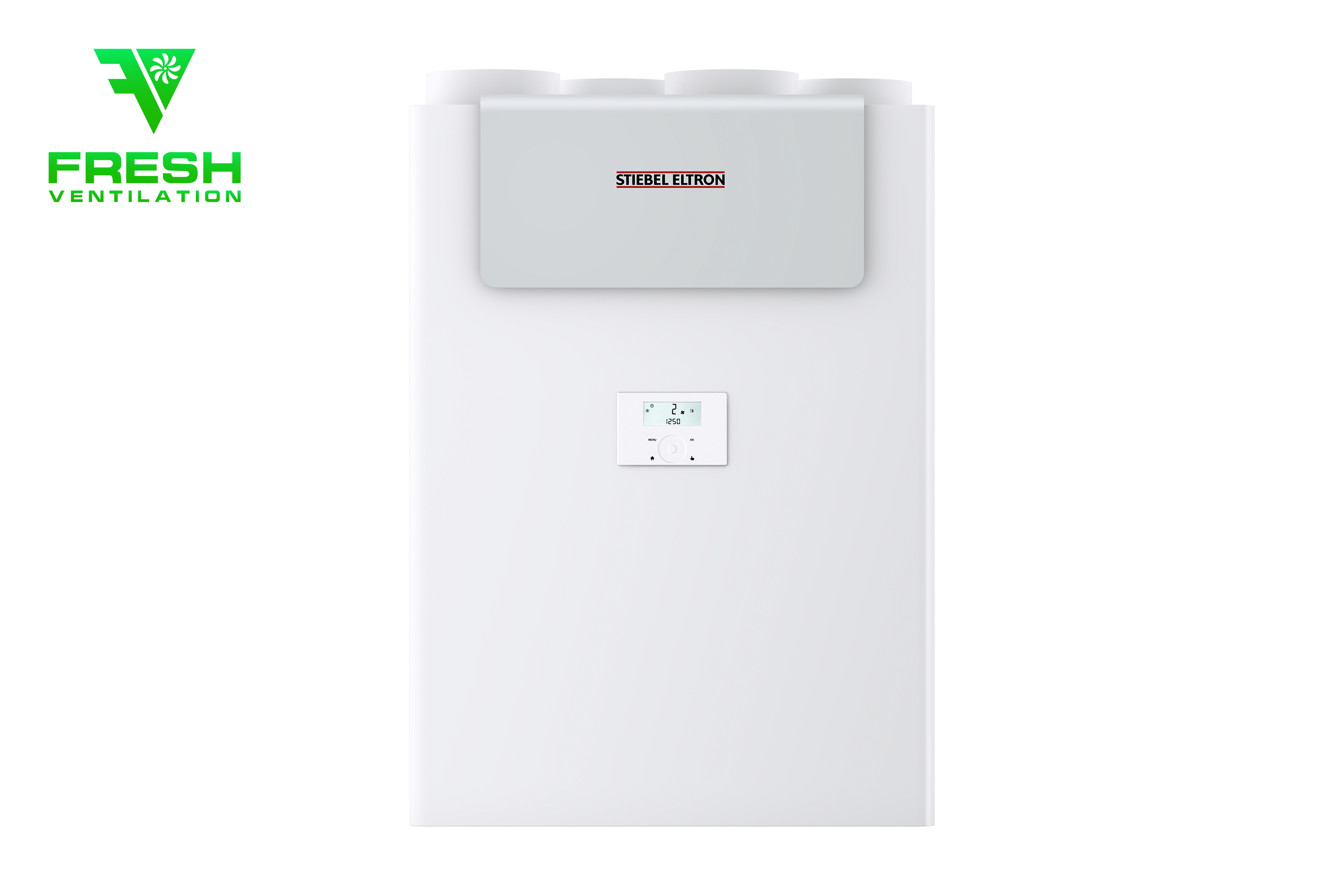
VRC-W 400
- Made in Germany.
- Centralised ventilation with up to 94% heat recovery.
- Inbuilt display directly on the appliance.
- Significantly reduced noise levels.
- Helps prevent condensation and mould through improved ventilation.
- Air flow rates 60 - 400 m3/h.
- ERV core available for humidity management.

LWZ 170 E PLUS
- Ventilation with up to 90% heat recovery.
- Centralised ventilation.
- Replaces indoor air with fresh filtered air from outside.
- Helps prevent condensation and mould through improved ventilation.
- Ideal for low energy homes and passive houses.
- Designed for air flow rates of 100 - 300 m3/h.
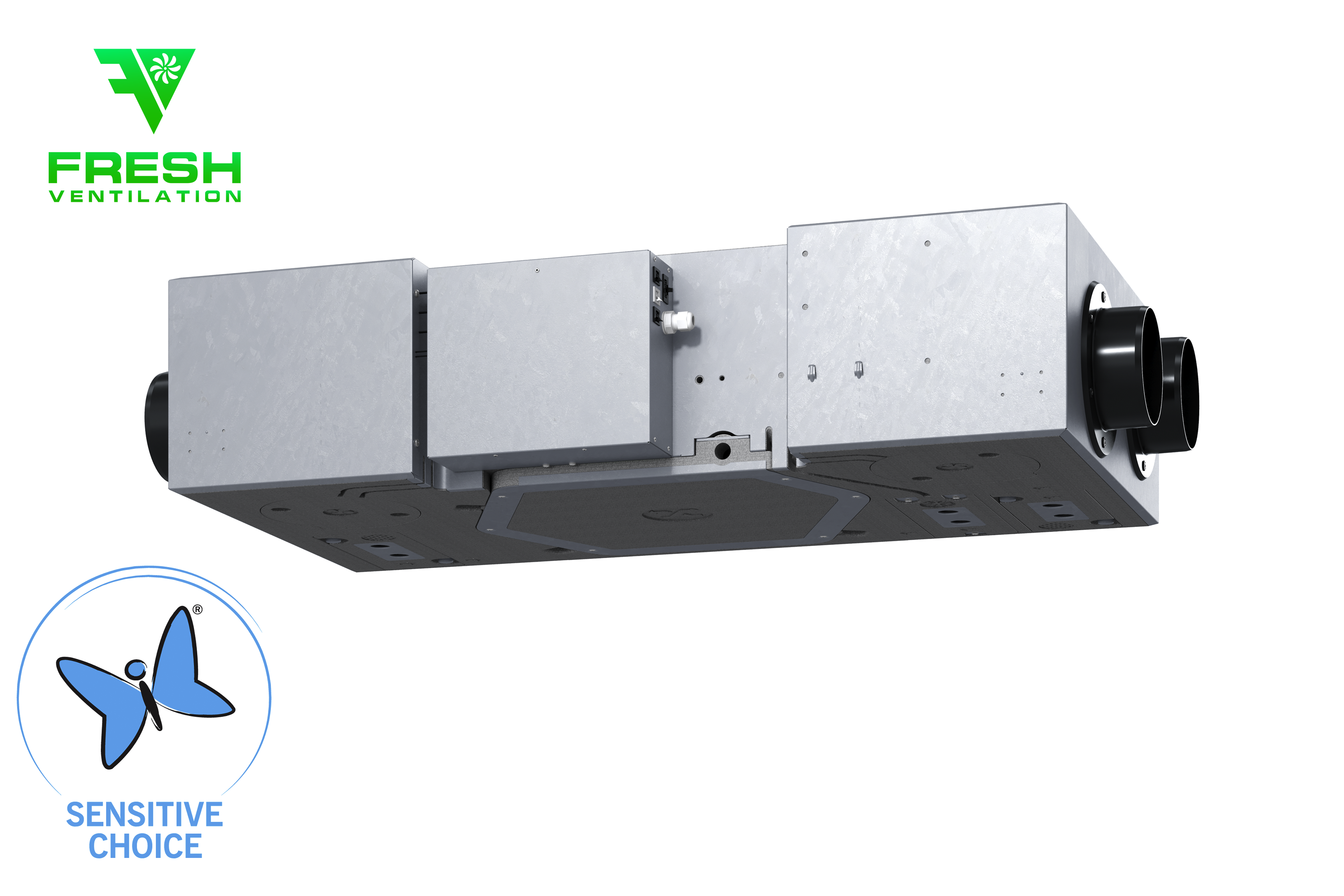
VCR 180 MC
- Compact and discrete roof installation.
- Replaces indoor air with filtered fresh air from outside, ideal for asthma and allergy sufferers.
- Helps prevent condensation and mould through improved ventilation.
- Energy efficient with up to 87% heat recovery.
- Designed for air flow rates of 50 - 180 m3/h.

VLR 70 S
- Decentralised ventilation.
- Up to 92% heat recovery.
- Quiet operation – supplies fresh air from outside to in your home or office.
- Installed in pairs, connect up to 8 units together.
- Prevents mould growth.
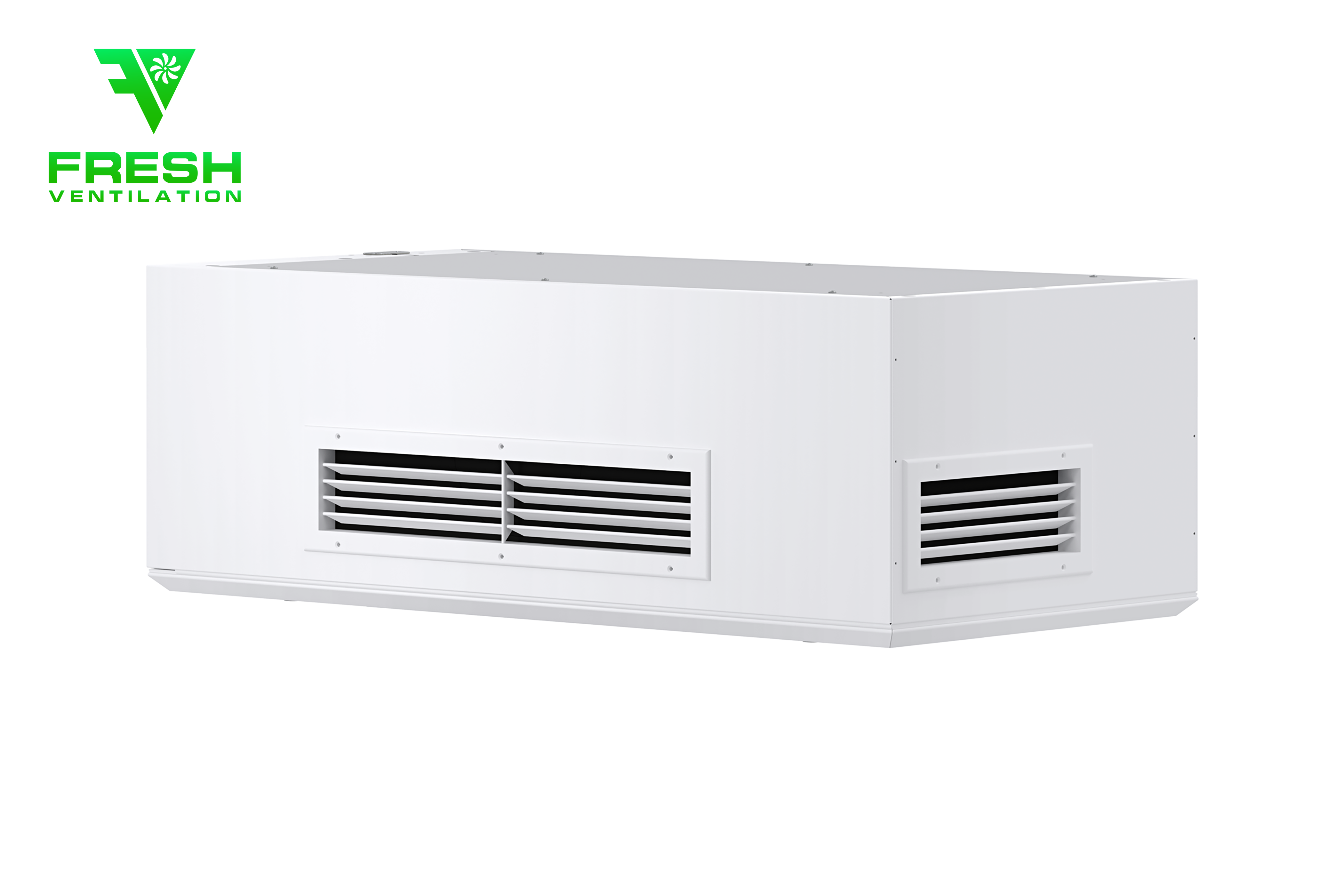
VRL-C G Premium
- Ventilation for schools, childcare centres, offices and community halls.
- Purifies the air and reduces aerosol concentration.
- Up to 92% heat recovery.
- Easy installation, even in retrofit projects.
- Additional accessories include CO2 sensor, VOC sensor, and motion sensor.
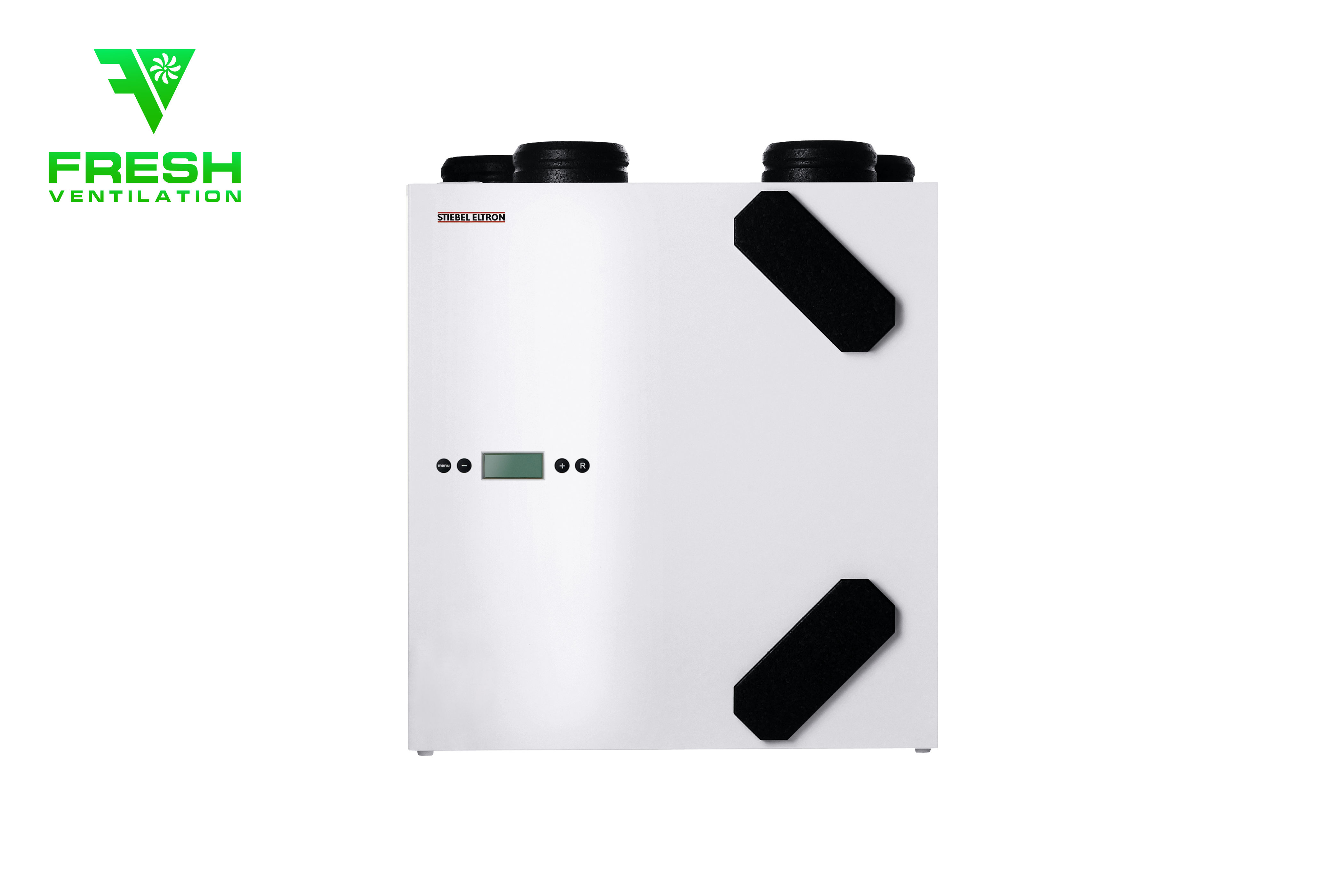
LWZ 70 E
- Centralised ventilation with up to 90% heat recovery.
- Replaces indoor air with fresh filtered air from outside.
- Helps prevent condensation and mould through improved ventilation.
- Ideal for small apartments.
- Designed for air flow rates of 50 - 180 m3/h.
Know More About STIEBEL ELTRON Ventilation Systems
STIEBEL ELTRON has a range of ventilation systems with heat recovery providing 100% fresh filtered outdoor air for low energy and passive house buildings.
Modern ventilation systems deliver air that is both healthy for breathing as well as healthy for buildings in that they help to prevent mould growth. These systems also make a major contribution to savings. The LWZ Plus systems can recover up to 90% of the energy that is conventionally lost through opening windows, and return it back to the heating system, so you're not throwing your money out the window.
There is an ever-increasing demand for energy-saving technology and improved building techniques to support this. With an increase in building airtightness, there is a need for effective ventilation to provide improved indoor air quality. STIEBEL ELTRON has a number of ventilation systems that can help to reduce the impact of moisture buildup. These systems effectively exchange inside air with fresh air from outside. The LWZ range uses a unique cross-current heat exchange system that exchanges air from inside with fresh air from outside without the two mixing. The LWZ ranges heat recovery capabilities help to save energy and, in turn, money on heating and cooling.
The LWZ 180 / LWZ 280 ventilation systems have up to 94% heat recovery whilst providing optimal indoor air quality. The LWZ 180 / LWZ 280 has been certified by the Passive House Institute Germany as a Certified Passive House Component.
Passive House Principles and Components in Australia
Passive homes in Australia are growing in popularity – and rightfully so because improving construction standards in Australia will always be of benefit. Homes built utilising the new Passive standard have appeared around Melbourne, Perth and the coast of NSW.
This article will serve as an introduction into the world of Passive house building design and construction, covering sustainable and green design, air changes, passive house certified components and more.

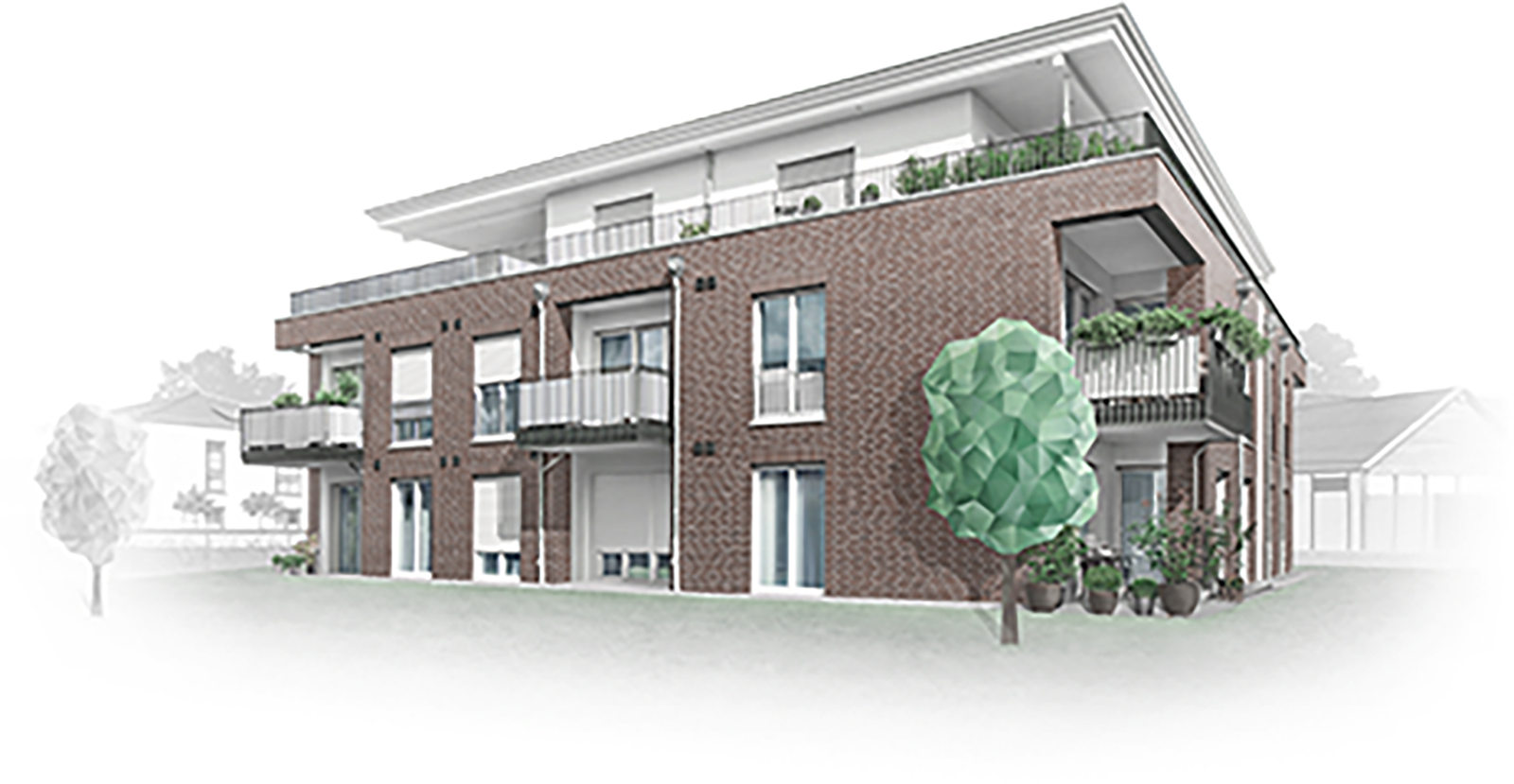
- What Is a Passive House?
- Passive House Criteria
- Building Envelopes and Energy Savings
- Thermal Bridges
- Sustainable Home Design and Green Building
- Air Tightness and the Blower Door Test
- Passive House Components
- Passive House High Rise Buildings
- Passive House Retrofit
What Is a Passive House?
The Passive House standard is a world-leading building standard that is centred around energy-efficient construction. Passive House design and construction means the house will require minimal energy consumption to achieve a comfortable temperature year-round, this includes all aspects of heating and cooling. In addition to providing comfort with minimal heating and cooling, the Passive House construction standard is designed to protect the building structure for long-term occupancy.
The standard can be applied to both residential buildings along with commercial premises. Various criteria must be met in order for the dwelling to be listed as an officially certified passive house. Online databases exist where you can search for certified passive house buildings, including various projects which included products by STIEBEL ELTRON. Many people are deciding to construct a living space that won't meet the exact criteria, but instead with a passive house planning package that fits into their budget.
Passive House Criteria

Space Heating Energy Demand
Heating energy must not exceed 15 kWh per square metre per year (or 10 W per square meter of living space). Small demands for heating can easily be met with the installation of convection electric panel heaters in open rooms and electric undertile heating for bathrooms. If further heating is required, hydronic heat pump solutions are often recommended.

Space Cooling Energy Demand
In areas where cooling is required, energy consumption to cool the living space is very similar to the energy consumption of heating energy, adjusted to allow for dehumidification. If a hydronic heating solution is included in the building design, it is recommended to select an inverter-driven air source hydronic heat pump, which can provide both heating and cooling.

Indoor Air Changes, Airtightness and Ventilation Systems
A maximum of 0.6 air changes per hour at 50 Pascals pressure (ACH50). Having such a low amount of air changes has the benefit of reducing the amount of heating and cooling energy consumption. However it also means mechanical ventilation with heat recovery is required to bring in fresh air and maintain healthy indoor air quality. Airtightness and ventilation is explained in greater detail below.

Energy Efficiency and Renewable Primary Energy Demand
The total energy consumption for all domestic applications, including room heating, water heaters, ventilation and domestic electricity must not exceed 60 kWh per square metre of treated floor per year.
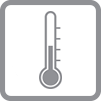
Thermal Comfort
Thermal comfort levels must be achieved in the entire living space and maintained year-round, with not more than 10% of the hours over 25 °C for a given year.
Building Envelopes and Energy Savings
With implementation of the concepts above, a building envelope is created which separates the interior from the exterior. This separation acts to keep the interior at a comfortable and stable temperature, while the outside temperature and climate fluctuates depending on environmental weather conditions.
The building envelope for passive house standard designed buildings mostly consists of insulating all around the building, in addition to a final air-tight layer because most insulating material is not airtight. While construction methods, materials and technology may change and advance, the requirement for both insulation and an airtight layer will always remain.
The ability of the building's envelope is directly linked to the potential for energy savings, this is known as minimisation. The greater effectiveness of the insulation and airtight layer will minimise the required heating and cooling energy, increasing overall energy savings.
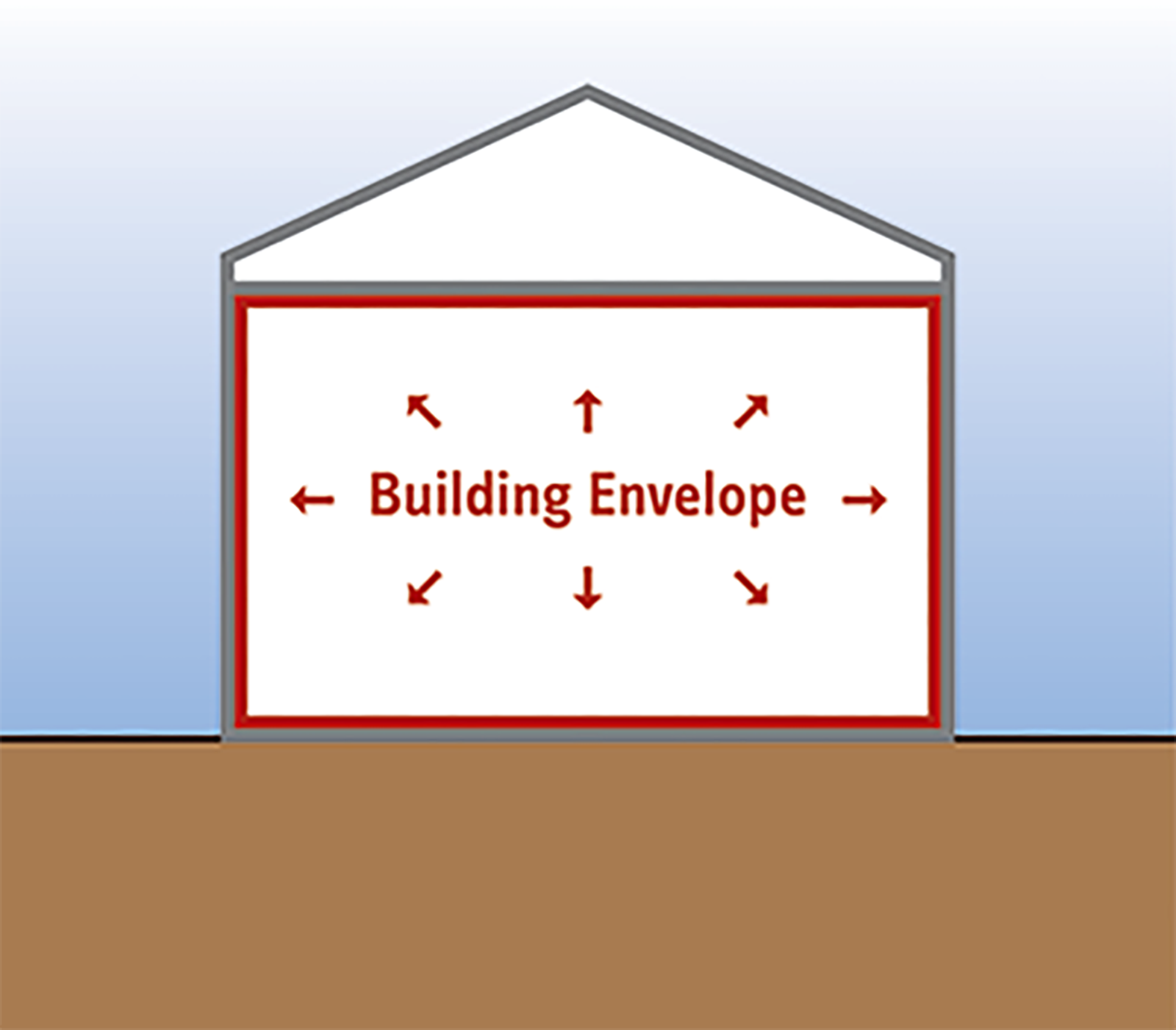
Thermal Bridges
Thermal Bridges are an important concept relating to design for the Passive House building standard. Thermal Bridges are defined as thermally weak points or interruptions in the building envelope which cause energy to be lost through heat losses. The heat losses from thermal bridges will cause lower interior temperatures of the surrounding areas. These lower temperatures cause moisture to build up and promote mould growth, impacting on the health and structural integrity of the building.
Arguably the biggest consideration for thermal bridges in building design are the windows of the dwelling. Windows traditionally in Australia have been thin and single glazed, which promote heat losses from the interior to the outside.
Passive house buildings are ideally paired with double glazed windows which provide greater insulation. However, not all double glazed windows are made equal. Thermally broken double glazed windows offer greater performance through insulation, minimising heat losses.
Thermal bridges can also include ceiling junctions, balconies, corners, verges and eaves. Thermal Bridges must be considered and a higher level of thermal protection added during the design phase.
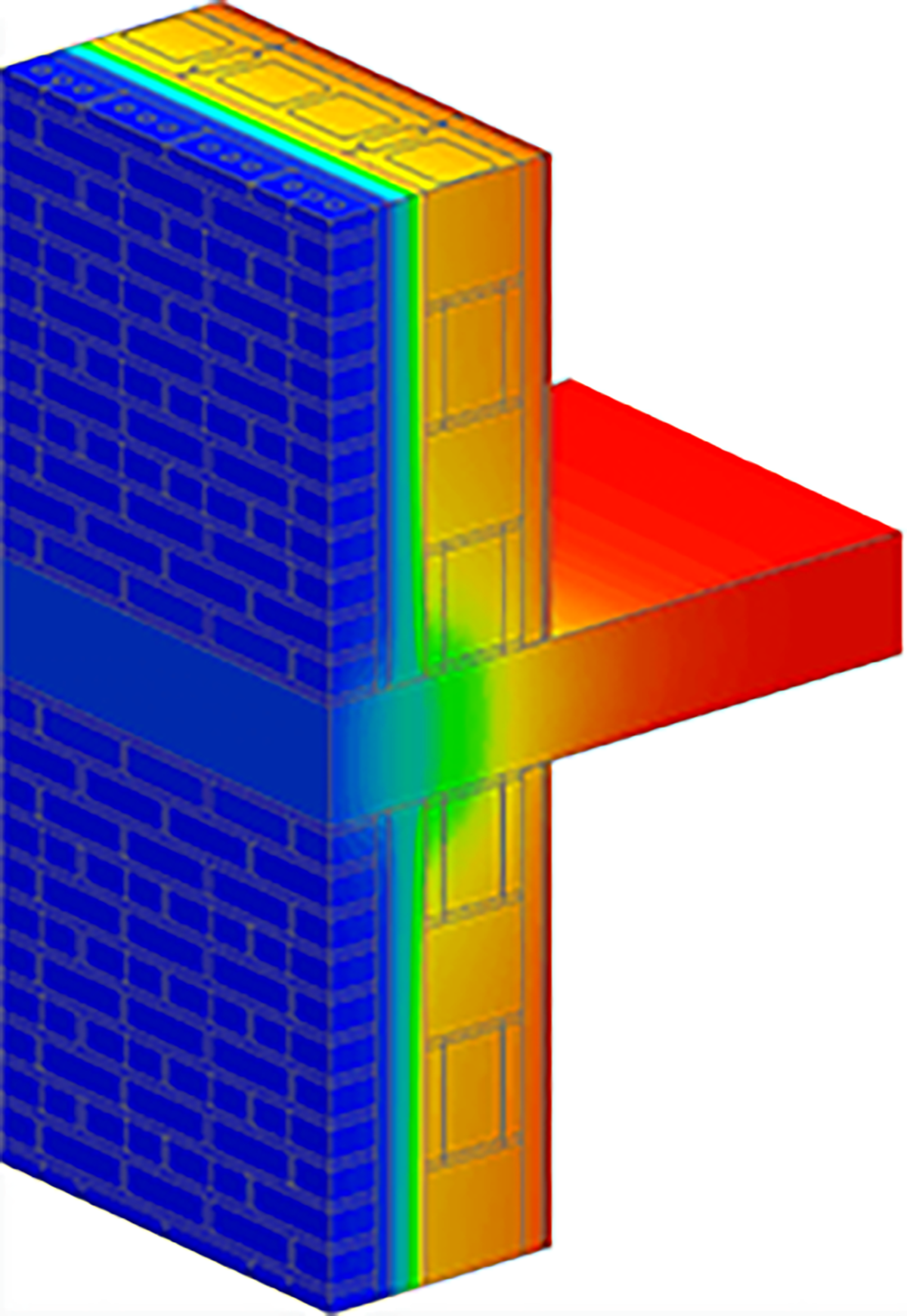
Sustainable Home Design and Green Building
In the simplest of terms, Green Building is building commercial and residential buildings with a focus on the future. Green Buildings are able to meet today's needs while not compromising the future, with design, construction and operation not having a negative effect on the environment and building occupants. Green building promotes efficiency in today's building standards, much like the Passive House standard.

Green Star Certification
The Green Star is an Australian building standard and framework promoting the implementation of Green Building practices. A proposal has been made to recognise Passive House buildings under the Green Star certification.
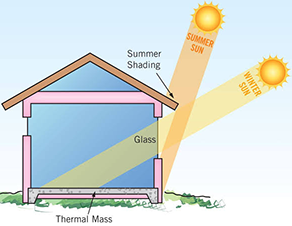
Passive Solar Building
Passive Solar Buildings are an addition to energy efficient passive design and are primarily considered during the design stage. Passive Solar Buildings collect heat from sunlight and store it in materials known as thermal masses. Passive Solar designs factor in building site selection, house orientation with north facing windows, thermal mass and heat distribution mechanisms to maintain comfort. While Passive Solar building and design will play an impact on cost savings, the most cost-efficient strategy will always be energy efficiency.

Energy Positive Buildings
Energy Positive Buildings are either commercial or residential buildings which generate more energy than they consume. This is very similar to the concept of Net Zero Buildings that have a zero net energy consumption. Often Net Zero Buildings are also Energy Positive buildings.
Air Tightness and the Blower Door Test
When building a green home and following Passive House principles and criteria, air tightness can present the challenge of bringing fresh air into the building envelope. The maximum permitted number of air changes in an hour must not exceed 0.6. Air changes in the building envelope are measured with a blower door test. Low numbers of air changes will result in less heat energy transferred outside, ensuring stable levels of thermal comfort.
Performing a Blower Door Test
The process of performing a blower door test starts with the calculation of the entire volume in the building envelope this is used to calculate air leaking values later. The building is then prepared by sealing all windows and opening all internal doors.
A blower door is then attached to the entrance of the dwelling. The blower door is essentially a fan mounted on an airtight membrane. The blower door is used to pressurise the envelope so that pressure values can be recorded and any leaks can also be found.
Passive House Components
Along with defining the building standard, Passive House offers an independent testing service for components designed to be used in commercial and residential buildings implementing the Passive House building standard. Passive House certified components are independently tested and certified to ensure that you are receiving components that fit the criteria of greatest quality control, high performance and energy efficiency. As a general rule, Passive Certified components are two to three times more efficient than the otherwise corresponding products which are often used.
Once a component has been certified by the Passive House Institute, the manufacturers and retailers of said product are able to display the “Certified Component”, notifying everyone of the performance, quality and efficiency of their product. The certification has recently been expanded to include climate-based certifications for product performance. The three certifications are “warm, temperature climate (phA+)”, “cool, temperate climate (phB)” and “hot climate (phA)”.
Ventilation
Arguably the most important component in your Passive House build, it is vital to select a heat recovery ventilation system which is certified for its performance and quality. The LWZ 180 is an ideal example of a certified ventilation system, boasting quiet yet exceptional performance.
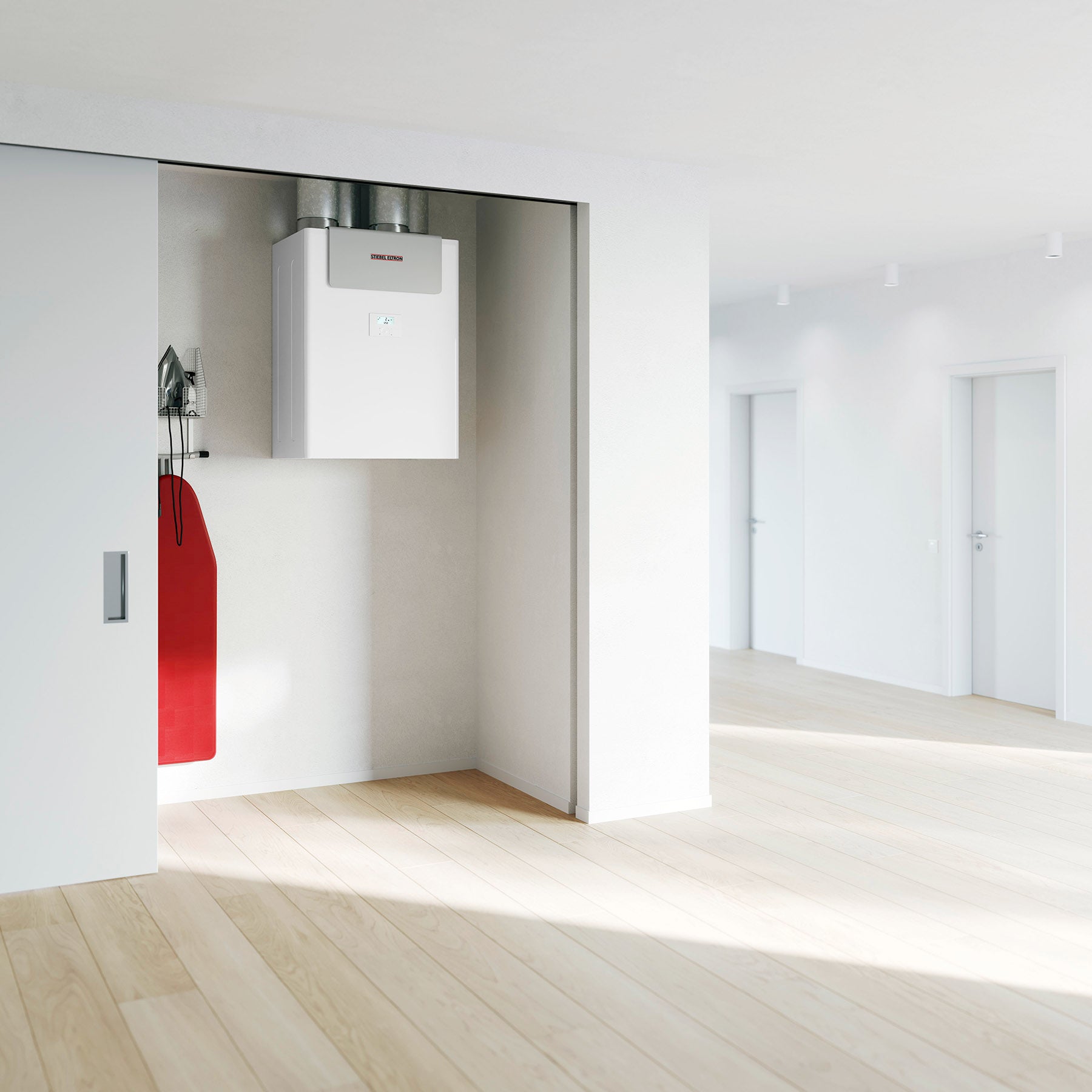
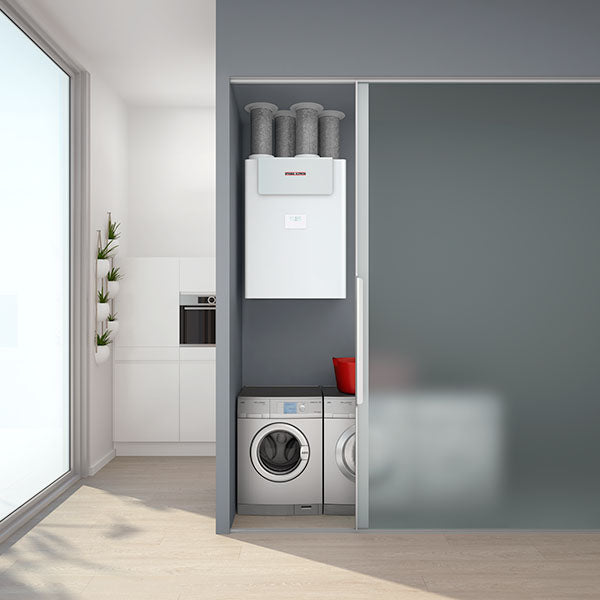
Passive House High Rise Buildings
The latest revision of the “Passive House Guide” includes provisions for hi-rise buildings, otherwise known as Passive House Towers. Australia is currently witnessing a shift to apartment living, predominantly seen in major cities like Sydney, Melbourne and Perth. Passive House Towers are more comfortable with lower living expenses for their residents.
Passive House Retrofit
While posing a challenge, it is possible to upgrade your house and retrofit Passive House standard. It is claimed that by retrofit applications have reduced their heating demand by up to 90%. Existing structures may cause problems with thermal bridges, so official certification may be a challenge. However keeping the Passive House principles in mind whilst planning and designing a renovation can result in increased efficiency and performance.
